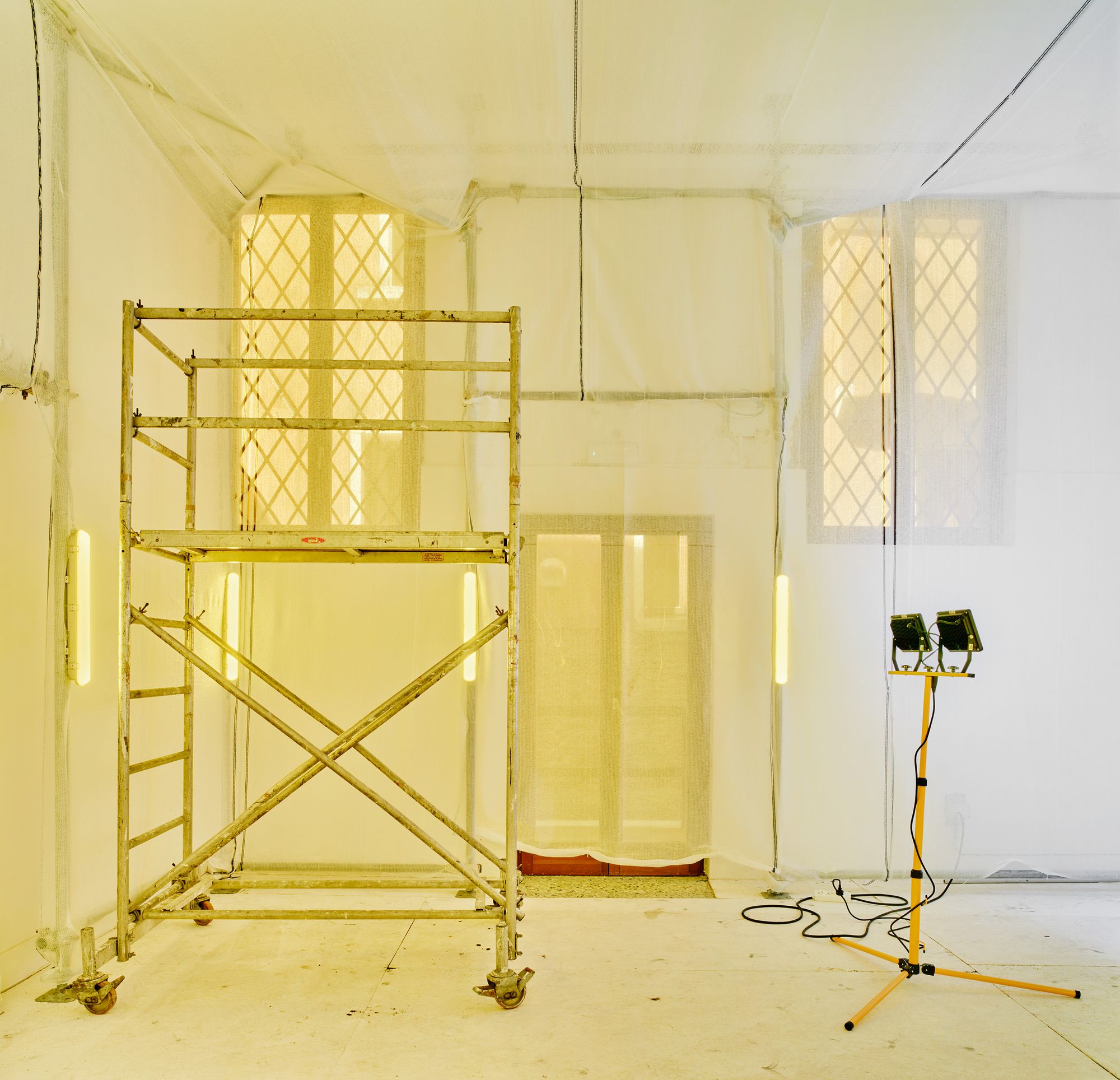
Holy See Pavilion: Opera aperta. Curated by Marina Otero Verzier and Giovanna Zabotti. Photograph by José Hevia. Courtesy La Biennale di Venezia.
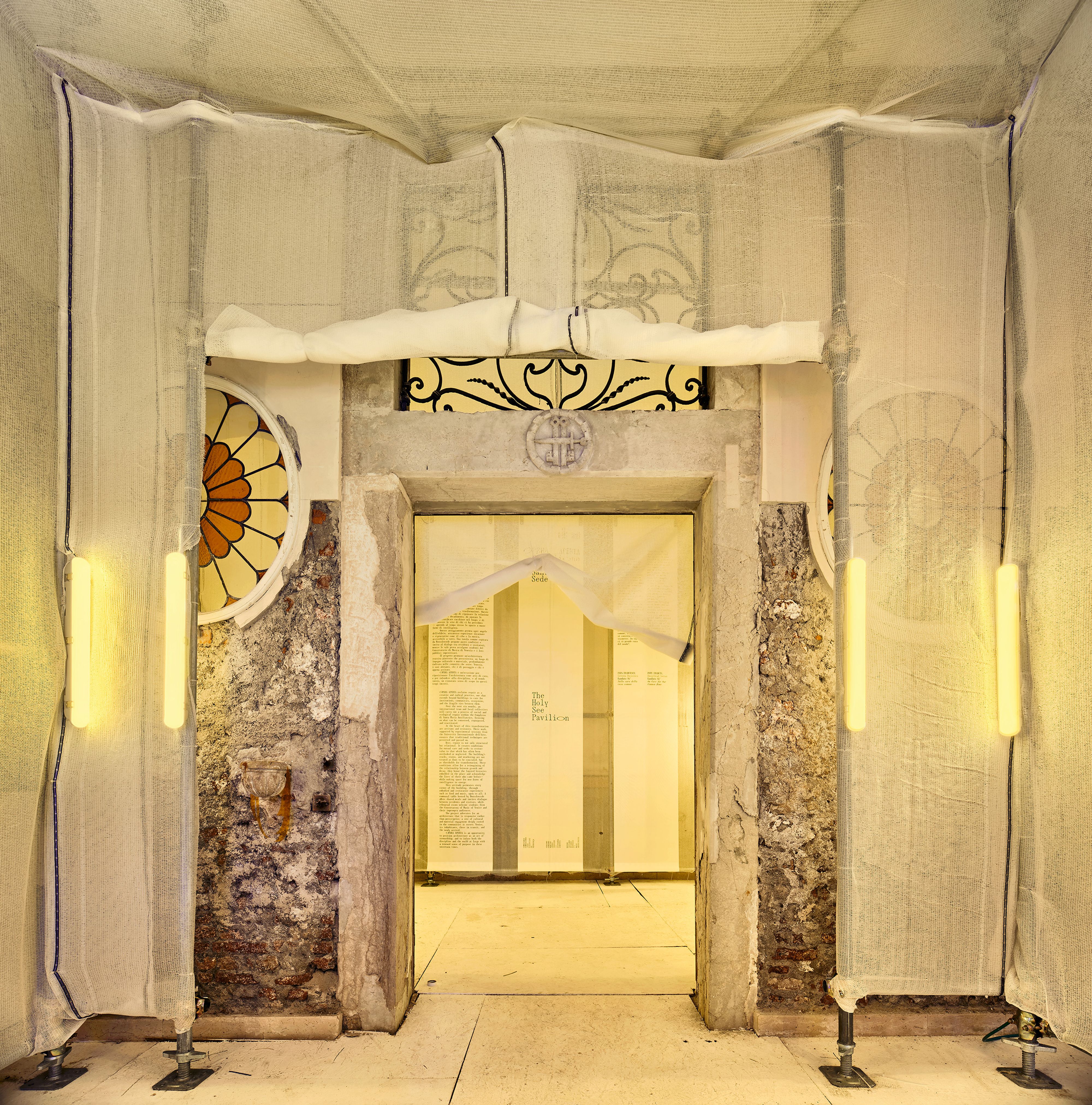
Holy See Pavilion: Opera aperta. Curated by Marina Otero Verzier and Giovanna Zabotti. Photograph by José Hevia. Courtesy La Biennale di Venezia.
As the 19th Venice Architecture Biennale prepared to open its doors this May, the world was eagerly awaiting the election of a new pope. At the same time, in partnership with PIN–UP, Columbia GSAPP organized its very own conclave in La Serenissima, a packed “Midnight Meeting” at the 16th-century Procuratie Vecchie in St. Mark’s Square, which is now home to the new SMAC gallery space. For two hushed hours, GSAPP faculty and fellow travelers spoke from the heart about keeping up the resistance in the face of growing threats to academic freedom. GSAPP faculty’s commitment is also tangible in the school’s strong showing at this year’s Biennale, with projects that include both national pavilions and Arsenale offerings. To help time-strapped visitors, we picked four favorites.
THE PAVILION OF THE HOLY SEE
Awarded a special prize by the Golden Lion jury, the Pavilion of the Holy See was curated by Giovanna Zabotti, co-founder of Fondaco Italia, and GSAPP faculty member Marina Otero Verzier, who spoke at the Midnight Meeting. Titled Opera aperta, the pavilion is in fact a building site, since the Complesso di Santa Maria Ausiliatrice, in which it is located, is currently undergoing restoration. By opening the conservation works to the public, as well as programming various events and activities at the site, the curators seek to “advocate for an architecture that is responsive rather than prescriptive, a site of cultural and material engagement deeply rooted in the communities it serves.” To this end, Venetian music students can book space to rehearse, and while doing so gain an impromptu audience; a communal table hosted by a cooperative brings together locals and visitors; the Università Internazionale dell’Arte is organizing public sessions to pass on traditional building techniques; and all the complex’s “cracks, efflorescence, mold, peeling paint, rot, rust, stains, and weathering” are constantly being drawn and recorded, a process that aims to understand them as an integral part of the building’s life rather than as construction pathologies. Art direction and architectural design by Tatiana Bilbao Estudio and MAIO include yellow lighting and scaffold sheeting that bathe Santa Maria’s interiors in the colors of the Vatican flag.
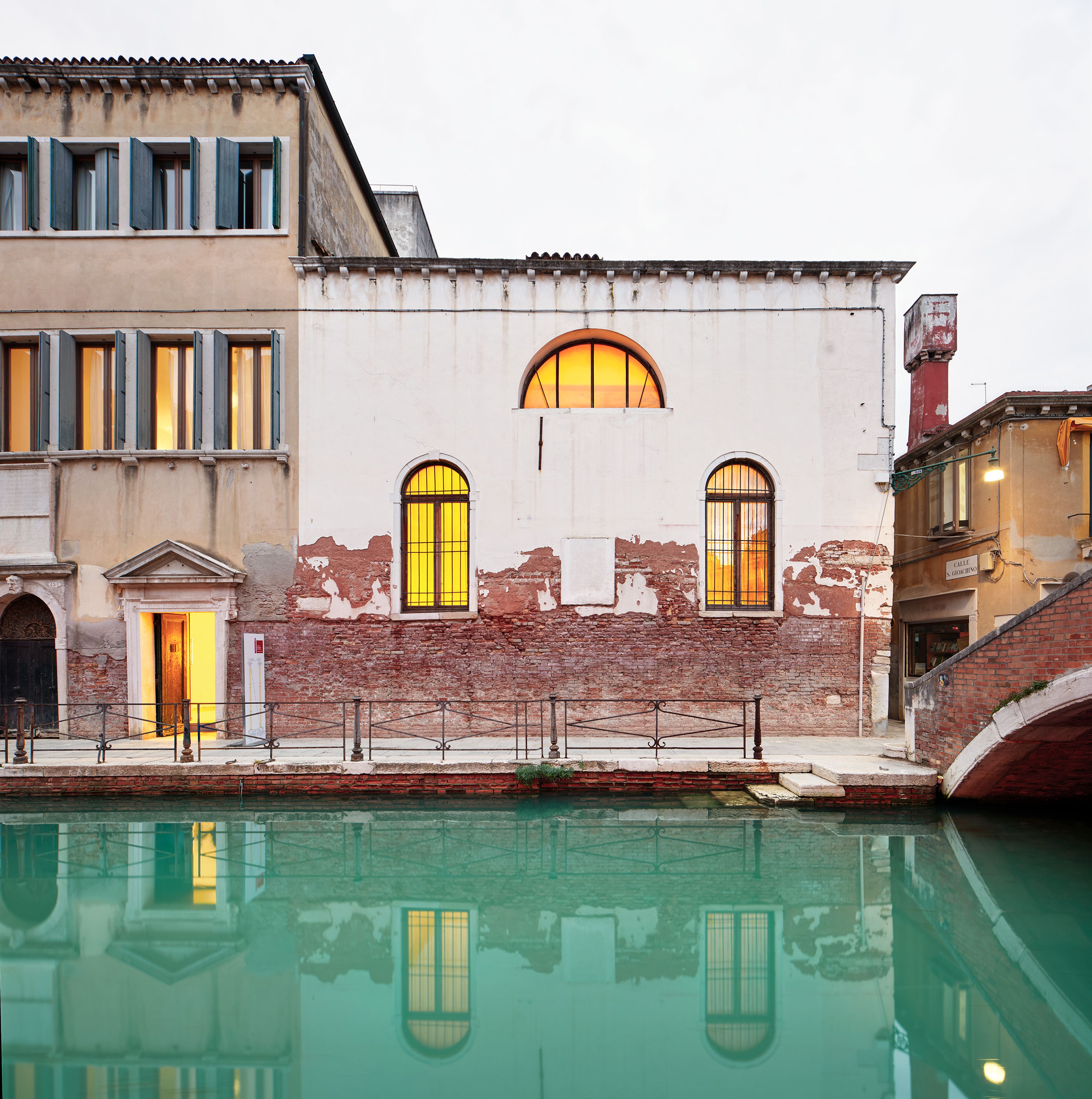
Holy See Pavilion: Opera aperta. Curated by Marina Otero Verzier and Giovanna Zabotti. Photograph by José Hevia. Courtesy La Biennale di Venezia.

Holy See Pavilion: Opera aperta. Curated by Marina Otero Verzier and Giovanna Zabotti. Photograph by José Hevia. Courtesy La Biennale di Venezia.
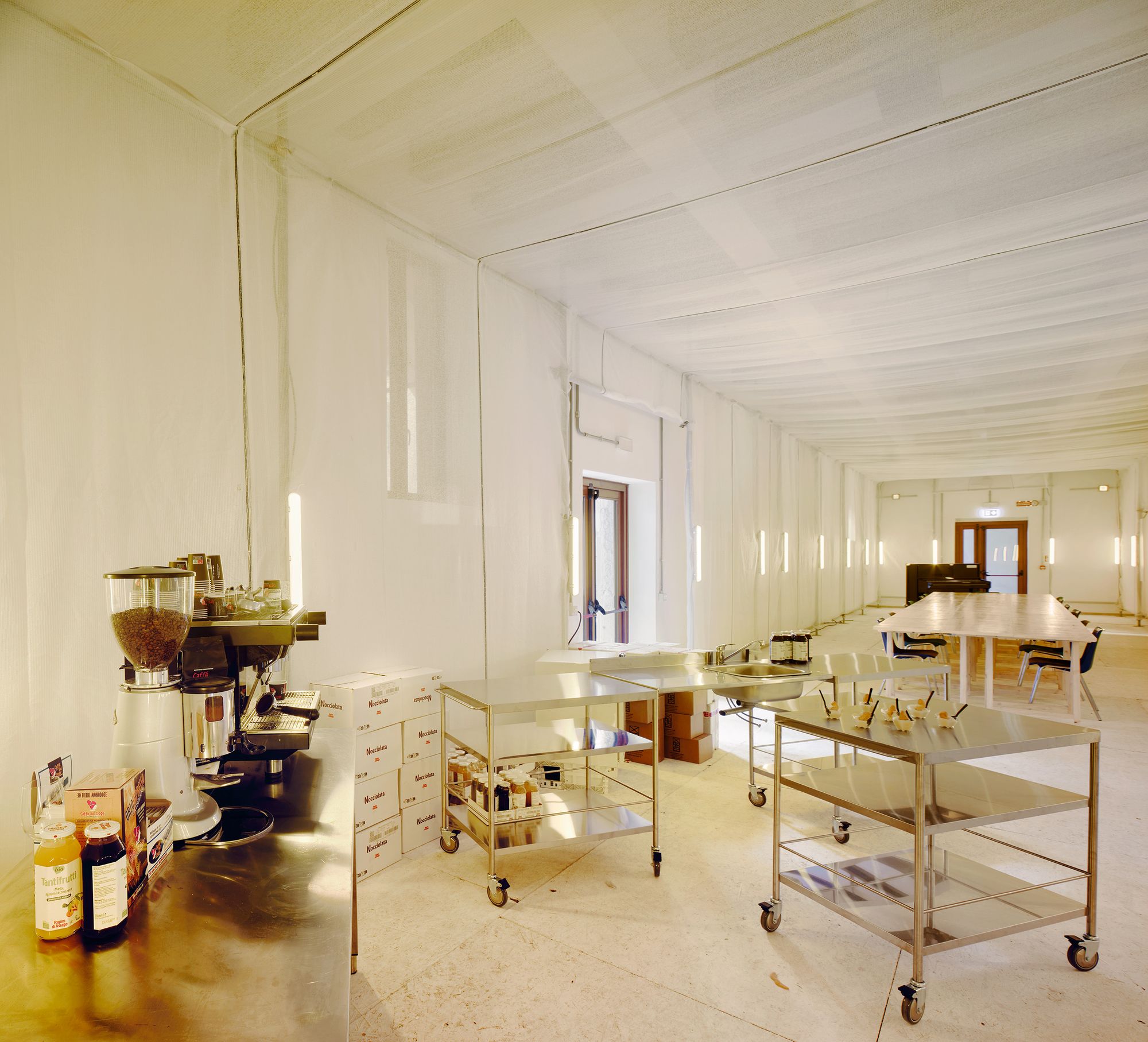
Holy See Pavilion: Opera aperta. Curated by Marina Otero Verzier and Giovanna Zabotti. Photograph by José Hevia. Courtesy La Biennale di Venezia.
STONELIFE
Subtitled The Microbeplanetary Infrastructure of Lithoecosystems, this Corderie installation by GSAPP Dean Andrés Jaque and his firm Office for Political Innovation examines the secret life of stone. While we tend to think of rocks as dead, mineral, and inert, they are in fact home to entire ecosystems of bacteria, fungi, algae, lichens, insects, and many other forms of life. Jaque and his team posit that these complex ecosystems could connect the scale of the microbial to the scale of the planet through their ability to sequester carbon. Thanks to the process of biomineralization, whereby atmospheric CO₂ is transformed into magnesium carbonate, iron carbonate, or calcium carbonate, “the built environment, often complicit in planet-scale carbonization, could become a planet-scale infrastructure for climate reparation,” both through naturally formed stone and its manmade varieties, which include concrete. At the Arsenale, this research, realized in partnership with the petrologist and geochemist Gokce Ustunisik and the microbiologist Tanvi Govil, is materialized through stone offcuts taken from landfills in Murcia and Tenerife, which are gently and visibly infused with the water vapor that allows them to harbor life.
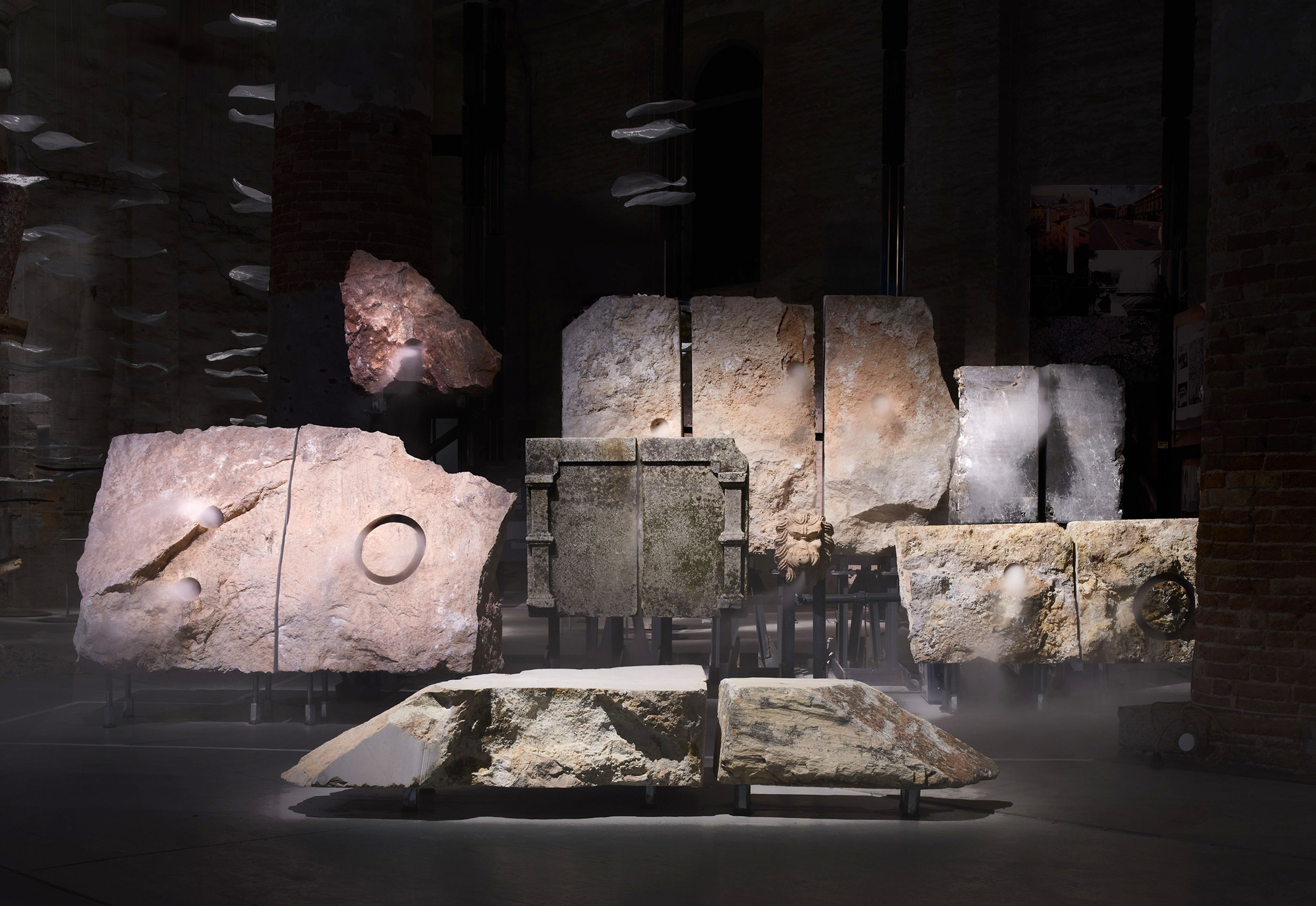
STONECRUST. The Microbeplanetary Infrastructure of Lithoecosystems. Curated by Andrés Jaque/Office for Political Innovation. Photograph by José Hevia. Courtesy La Biennale di Venezia.
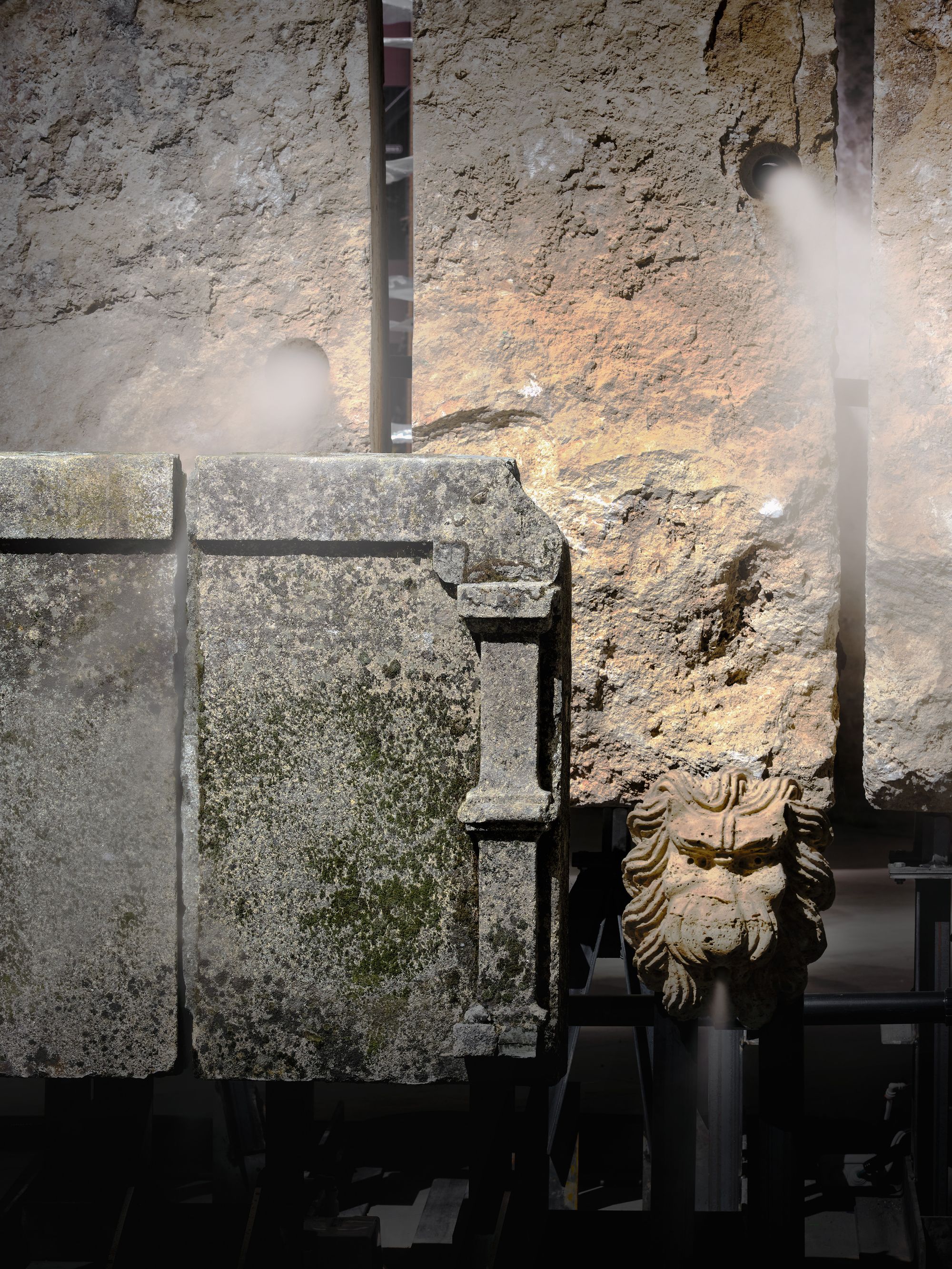
STONECRUST. The Microbeplanetary Infrastructure of Lithoecosystems. Curated by Andrés Jaque/Office for Political Innovation. Photograph by José Hevia. Courtesy La Biennale di Venezia.
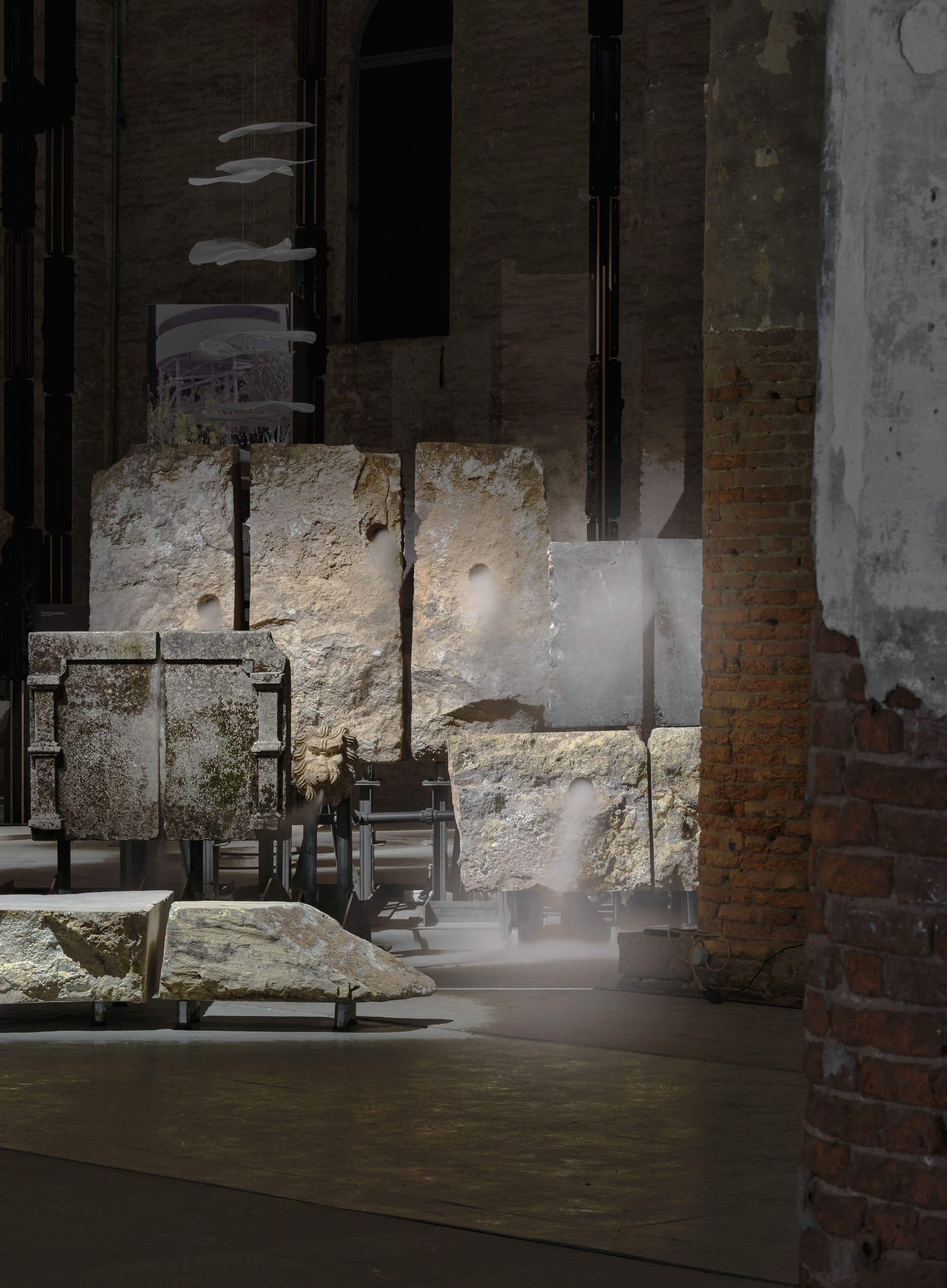
STONECRUST. The Microbeplanetary Infrastructure of Lithoecosystems. Curated by Andrés Jaque/Office for Political Innovation. Photograph by José Hevia. Courtesy La Biennale di Venezia.
THE CATALAN PAVILION
As October’s terrible gota fría floods amply demonstrated, Spain is a country where water has become a life-threatening issue. In a changing climate, there’s either too much or too little — just prior to last year’s disaster, Barcelona was coming out of an unprecedented three-year drought. With Water Parliaments, the curators of the Catalan Pavilion — former Storefront director Eva Franch i Gilabert and Alejandro Muiño and GSAPP faculty Mireia Luzárraga (a Midnight Meeting speaker) of Barcelona-based office TAKK — seek to “rethink language as activism, architecture as dialogue, and water as the living voice that binds all life.” Housed in a fabric tunnel lit like a scene from The Little Mermaid, the pavilion features installations that inform, engage, and speculate. Among them are playful machines such as Pyrineucus-Eco-Hydrator, a curious beast that looks to weed out water-thirsty, non-indigenous saplings in the drought-stricken forests of the Pyrenees, or Sediment Saloon, a lounge area constructed from hydro-suction dredging pipes in which visitors can learn about the negative impact of dams on river life. Even if you don’t make it to Venice, you can join in on the conversation at waterparliaments.org.

Catalonia in Venice—Water Parliaments. Curated by Mireia Luzárraga, Eva Franch i Gilabert, and Alejandro Muiño. Photograph by José Hevia. Courtesy La Biennale di Venezia.
EARTHEN RITUALS
For Lola Ben-Alon, who runs the Natural Materials Lab at Columbia GSAPP, traditional techniques, the most basic of materials, and cutting-edge technology can all intersect to humanity’s benefit. With Earthen Rituals, which her team is showing at the Arsenale, ancient earth-construction methods — including Italian terracruda, German Lehm, and east-African udongo — have been fed through AI and a digital printer to produce an arresting circular totem that rises into the rafters of the Corderie. Held together without glue or cement so as to reduce its carbon footprint, the structure consists of bricks that have been printed in an innovative earth-fiber mix that includes excavation waste and agricultural by-products. Slotted onto bamboo poles and braced with wooden rings, the bricks display high-relief textured surfaces that appear as though woven, enmeshing as they do techniques of rammed earth, cob, basketry, and figurine-making. A poetic response to our rapidly digitizing, carbon-heavy world, Earthern Rituals proposes alternative avenues of exploration in reaction to our current environmental crisis.

Earthen Rituals. Curated by Lola Ben-Alon. Photograph by José Hevia. Courtesy La Biennale di Venezia.
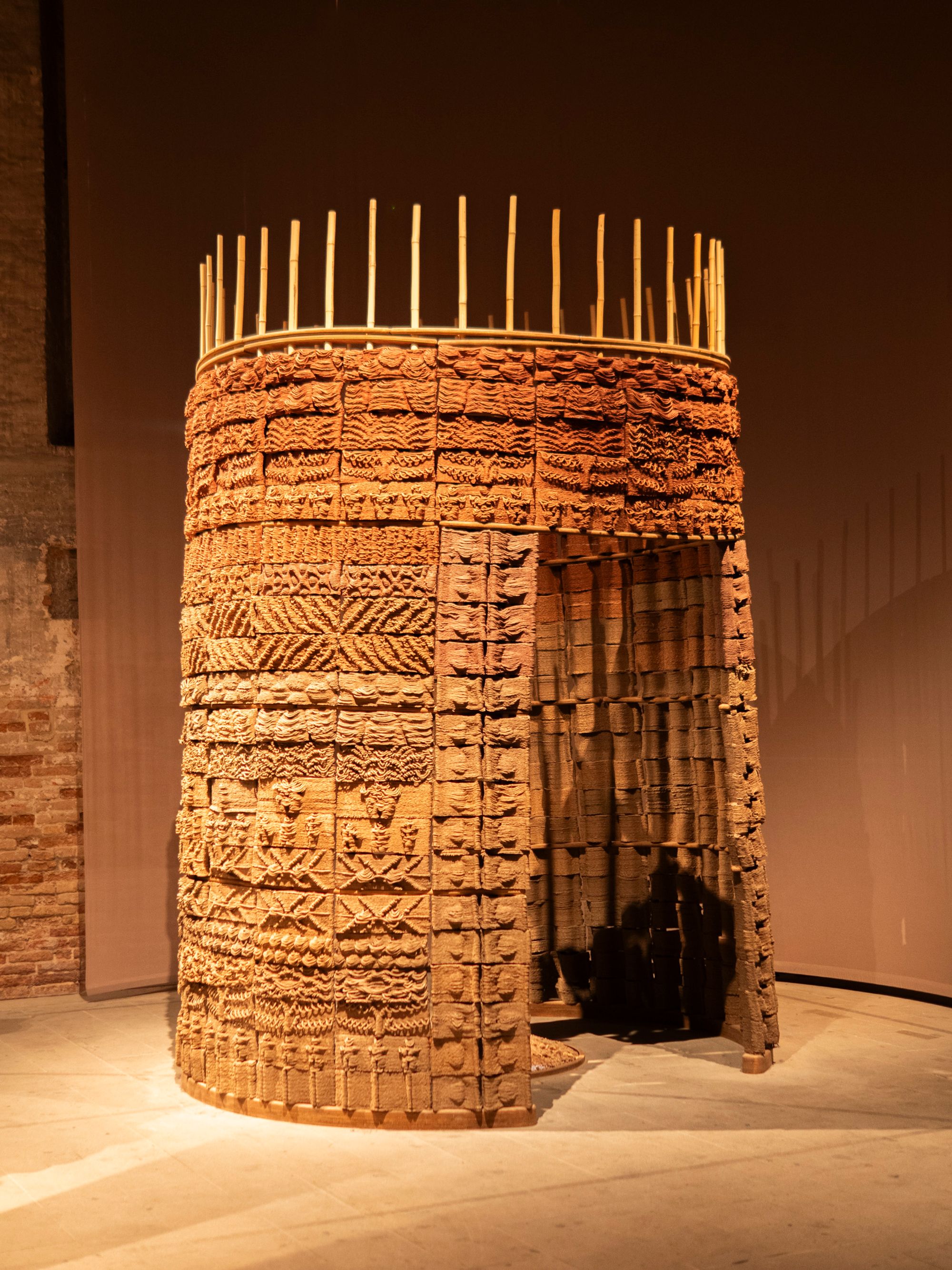
Earthen Rituals. Curated by Lola Ben-Alon. Photograph by José Hevia. Courtesy La Biennale di Venezia.
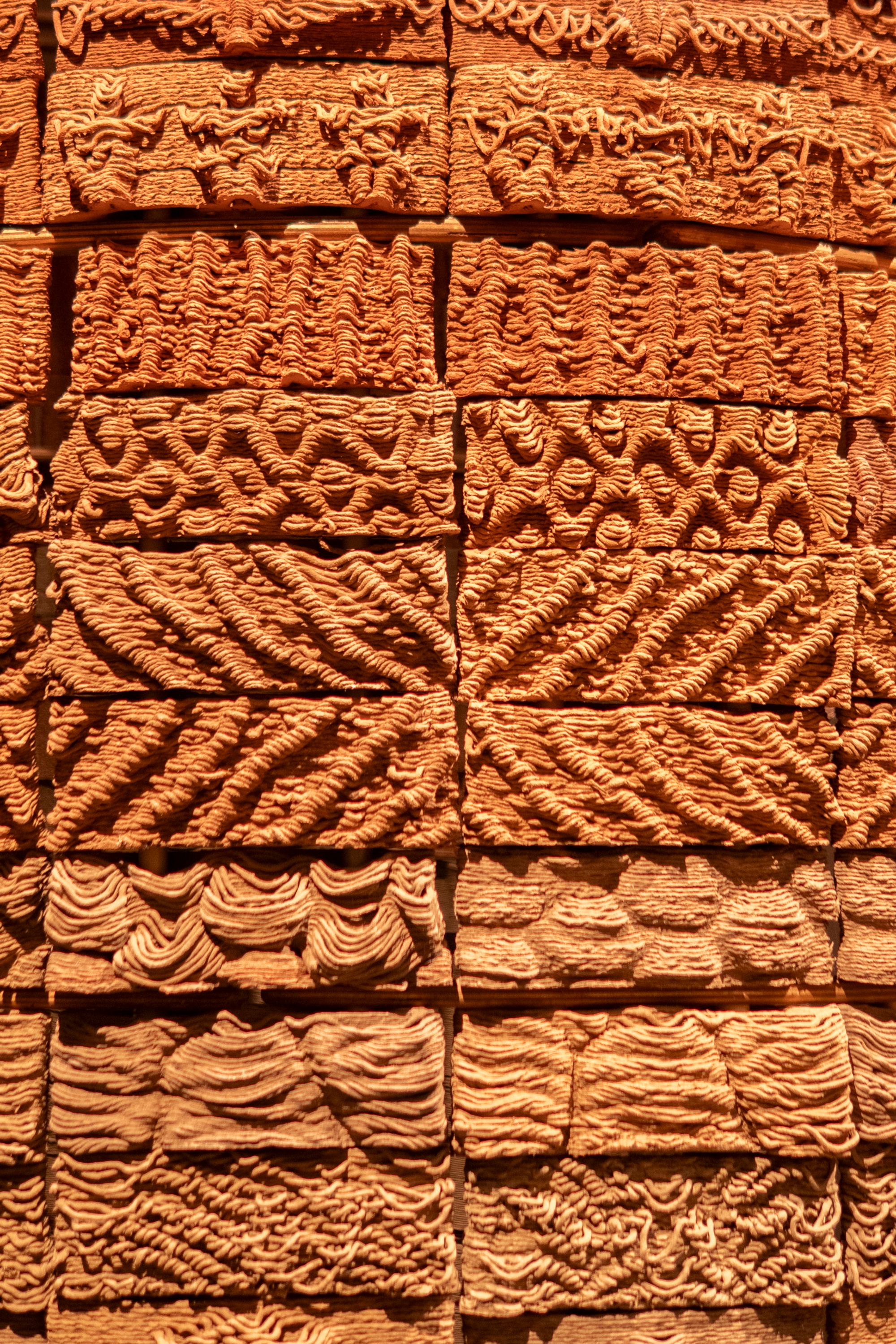
Earthen Rituals. Curated by Lola Ben-Alon. Photograph by José Hevia. Courtesy La Biennale di Venezia.
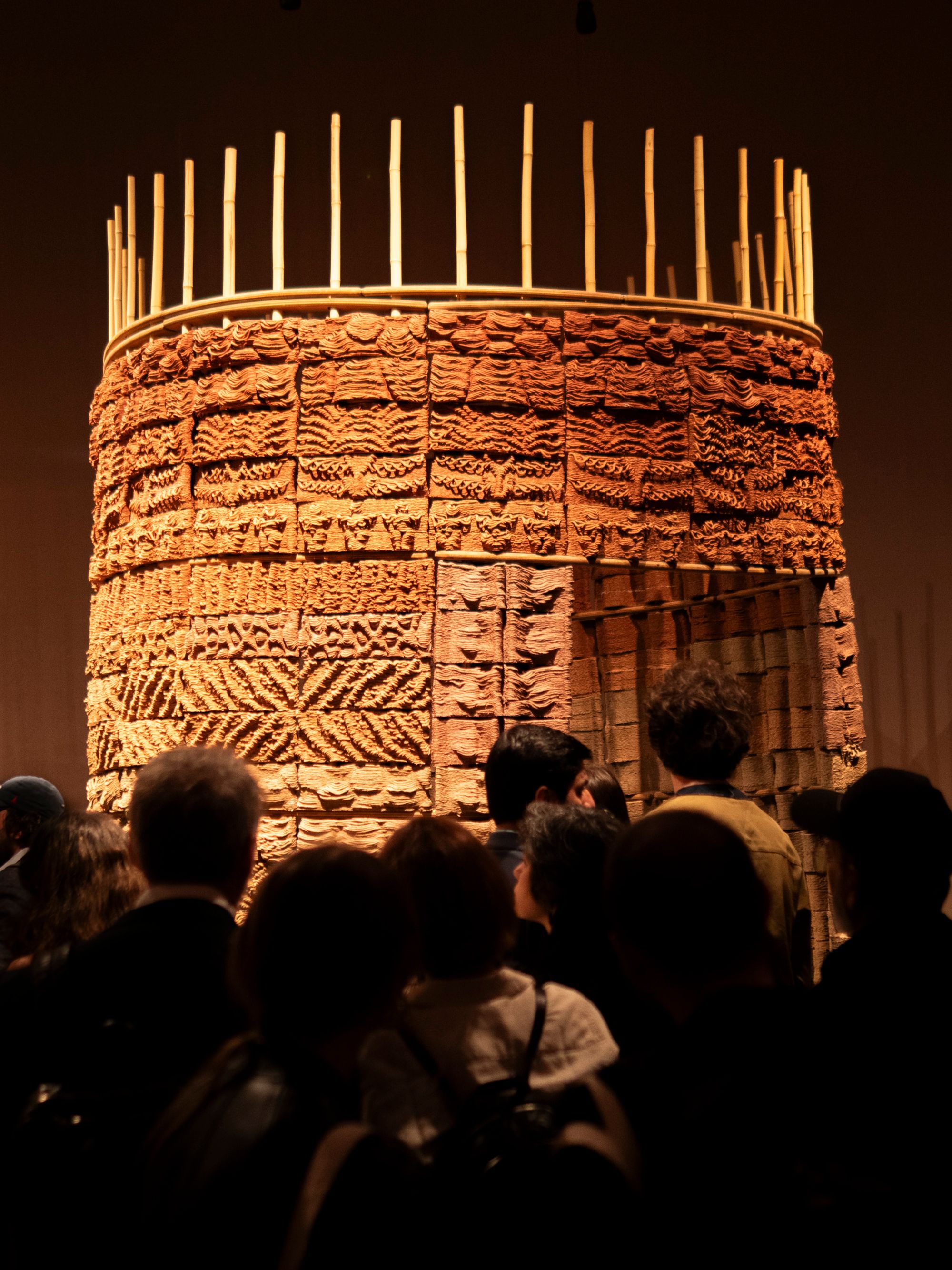
Earthen Rituals. Curated by Lola Ben-Alon. Photograph by José Hevia. Courtesy La Biennale di Venezia.